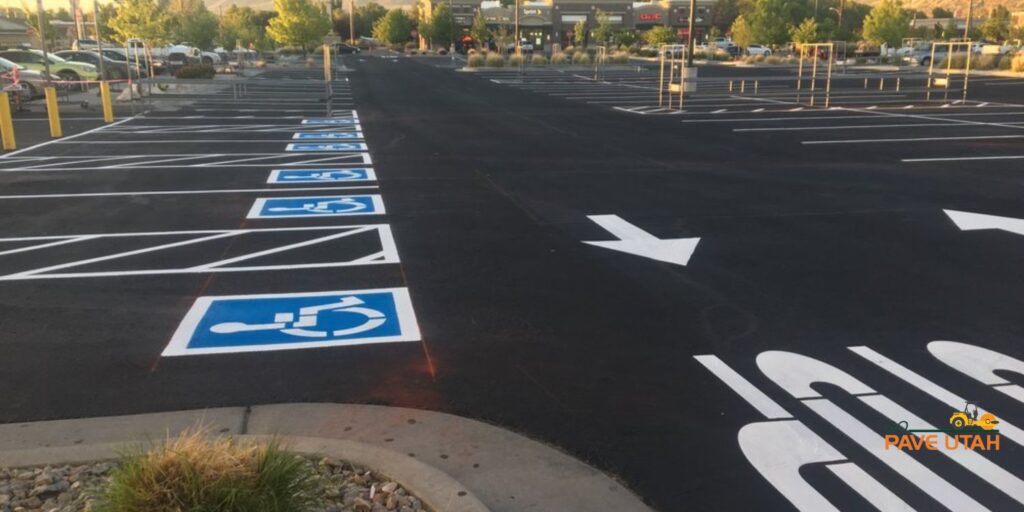
When you think about asphalt surfaces, it’s easy to picture a smooth blacktop. But what lies beneath tells a much more important story. Commercial asphalt is a layered system, engineered to perform under pressure—literally. If you manage a commercial property in Utah, knowing how these layers work can help you make better decisions about repairs, resurfacing, or full replacements.
Every strong asphalt surface begins with a properly prepared subgrade. This is the natural soil layer, and if it’s unstable, the entire pavement structure above will suffer. Before asphalt is installed, the subgrade is compacted, and in some cases, treated or stabilized. If this step is skipped or done poorly, your pavement will settle unevenly and deteriorate faster than it should.
On top of the subgrade lies the subbase—a compacted layer of gravel or crushed rock that adds stability and drainage. In a state like Utah, where freeze-thaw cycles are a concern, the subbase plays a key role in keeping water away from the asphalt layers above. When designed correctly, it prevents moisture from pooling and helps protect the pavement from internal damage.
The base course is made of strong, angular aggregate and is responsible for bearing most of the load from traffic. In a commercial setting, where vehicle weight and volume are significantly higher than residential properties, the base course is vital to the asphalt’s long-term stability. It distributes pressure across the lower layers and provides a solid platform for the surface above. When the base course is improperly constructed or begins to deteriorate, it often leads to rutting, dips, or early structural failure.
The binder course sits between the base and the surface and is made from a mix of asphalt binder and coarse aggregates. Its purpose is to absorb stress and distribute loads evenly across the lower layers. The binder course ensures that your pavement can flex slightly without cracking under traffic or shifting temperatures—a major advantage in Utah’s variable climate.
The final layer is the one you see and drive on. Known as the surface or wearing course, it’s made of fine aggregate and high-quality asphalt binder. This layer is engineered to resist wear, provide skid resistance, and seal the system against water and air intrusion. It’s your first line of defense and your pavement’s most visible sign of performance.
Understanding the structure of commercial asphalt helps you make smarter choices when budgeting for repair, resurfacing, or full replacement. Each layer has a job to do—and if one fails, the others often follow. That’s why it pays to get things right from the ground up.
Want to know if your property’s asphalt structure is built to last? Get in touch with Go Pave Utah for a consultation and expert evaluation. Their team can assess existing surfaces or help plan a new project that meets both structural demands and local conditions.